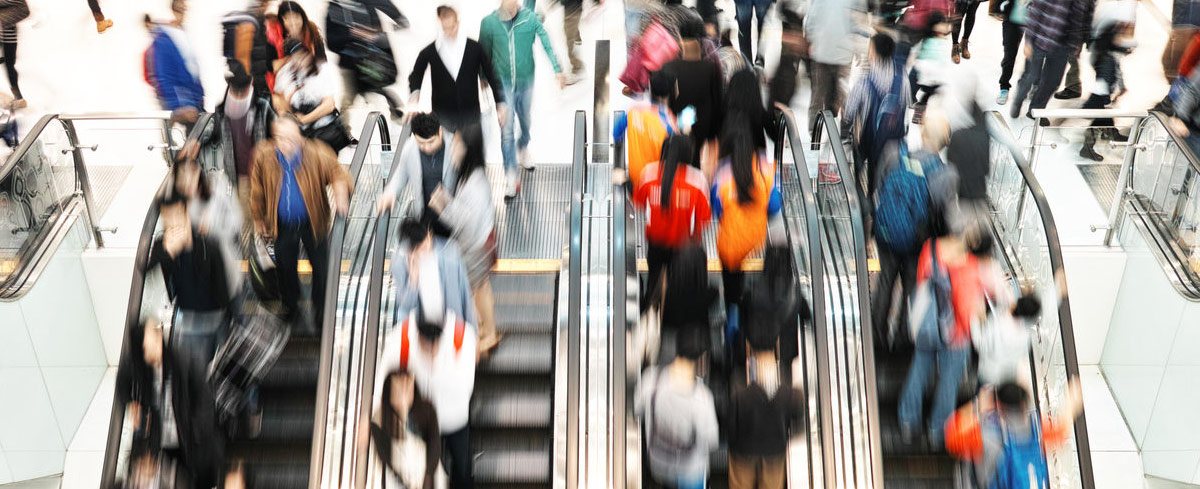
Making Organic Reach More Organic With A Social Media Wall
May 3, 2017 by guest author, Ellyce Kelly
Guest Post: Arjen Klijs, SEENSPIRE
Many digital marketers have experienced a sinking feeling when they notice the likes and shares on their social media postings have ground to a screeching halt.

Arjen Klijs
Was it something they did? Something they posted? They frantically dig through analytics and Google for clues, and realize the only plausible explanation is an algorithm change. Their followers are simply not seeing all their posts anymore, for reasons entirely out of their control.
The Chicago Tribune recently documented its failing organic Facebook reach on Medium, and many more publishers have echoed similar sentiments. They, too, have felt the rug pulled out from under them.
It’s no secret that organic reach is becoming more elusive on all social media platforms, and that an effective social media strategy requires buying ads on Facebook, Twitter, Instagram or any other platform you use. Without paying for a boost, posts are less likely to be seen.
So … how can marketers reach their audiences using existing resources, without feeling like they’re on a hamster wheel – chasing the latest algorithm tweaks?
Going To The Wall
Let’s start by rethinking the meaning of organic reach. Facebook defines organic reach as “the total number of unique people who were shown your post through unpaid distribution.” In other words, free exposure, naturally, without the artificial mechanism of a paid ad forcing people to see your post. Organic, by definition, means “of, relating to, or derived from living organisms.”
If you consider organic in that sense, consider the power of reaching people live, in person through a digital display. Rather than catching their attention as they scroll through their social media feeds, you catch their attention in their physical surroundings—while they’re waiting, buying, or on the go.
Putting social media posts on a video wall or large single display in common, well-trafficked areas redefines “organic reach” by combining online and on-site opportunities to connect with people. With the right software and packaging, companies can create their own social media channel with brand-owned, user-generated social media content. Users benefit from having a captive audience at a location, using the instantaneous impact of social media.
Picture a digital display featuring a mix of live updates, images and videos from followers, industry leaders and your own company into one channel. Audiences stop and watch posts appear from fellow enthusiasts.
The real draw, though, is the thrill of interacting with a brand live. A customer might post a photo of herself with the official company hashtag and seconds later, see that same photo appear publicly on that social media wall.
It may sound complicated to execute, but doesn’t have to be. There are tools available. The platform we market at SEENSPIRE, for example, is templated and subscription-based, meaning an automated channel can be created from scratch in a handful of easy steps.
Social Media “Impressions” Via Foot Traffic
Every business has opportunities to expand their “organic reach” live by getting getting those posts visualized on a large display or video wall. If you’re a retailer, you understand how important the in-store shopping experience is. If you’re a service provider, you’ve most likely participated in conferences or trade shows. If you’re an employer, you have people coming in and out of your offices every day. Why not take advantage of the foot traffic already coming through your doors?
In the United States, the average cost per click of Facebook Ads in late 2016 was about 27 cents. For 1,000 impressions, the average cost was $7.19, according to research by AdEspresso. On Twitter, a thousand views costs between $9 to $11. Clicks on Twitter cost 25 to 30 cents, according to Follows.com.
Consider these very rough estimates of people walking in and out of retail businesses: The average family restaurant chain might serve 150 people per day. The typical U.S. supermarket takes in a whopping 7,500 customers per week. For each of these customers, there is no need to pay for “impressions” as we refer to exposure in social media.
Social media will only continue to expand its influence, despite marketers having to spend more on ads. We’re learning that the No. 1 rule in investing also applies to marketing: don’t put all your eggs in one basket. In other words, diversify. Find new ways to reach people in person and create your own organic reach.



Leave a comment